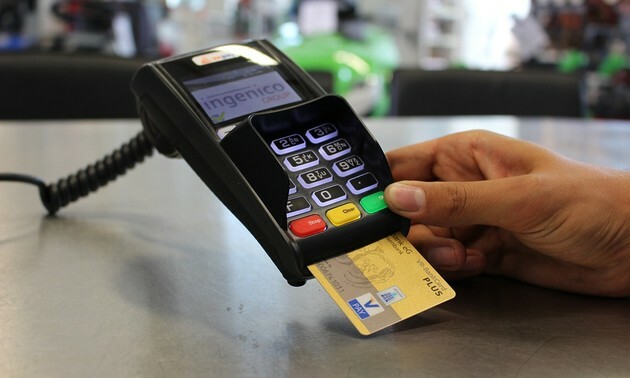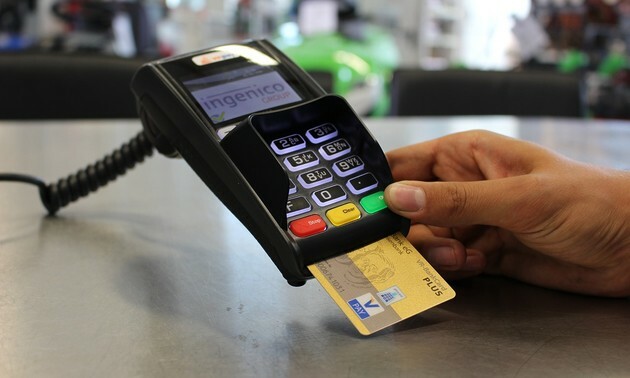Debt is something that a person owes, and may be synonymous with “debt”. In the case of cards and forms of payment, debit is an amount charged and withdrawn from the money holder's account.
Credit, on the other hand, is when there is a transfer of a certain amount to a subject, with a credit card being one of the ways in which the amount is used.
| Debit | Credit | |
|---|---|---|
| Definition | Debt, something owed by an individual. In the case of current cards and payment methods, it also means an amount withdrawn from the money holder's account immediately when making a purchase or paying for a service. | Trust placed in someone; if this confidence is provided by providing a monetary amount, the amount in question is designated as a “credit”. |
| Examples | Buy a cell phone by paying the full amount using a bank card: debit made to the bearer's account; customer owes the bank for having used the overdraft: the individual is “in debt”. |
Credit card, payroll loan, housing loan, student loan, business support credit, working capital financing, Leasing for legal entities, etc. |
What is debit?
If we speak in the original sense of the word, debt is a debt contracted by someone. But there is also the significance brought by the payment method, where an amount is automatically charged from an individual's bank account.
Therefore, if the subject opens an account and deposits money in it, the amount will be available to be debited when making a purchase or paying for a service.
Thus, you can purchase goods being charged directly to your bank account.
However, if you owe the financial institution, you will be “in debt”. That is, you will be charged for money that has already been used and that the account had no funds.

debit examples
- One person decided to save as much as he could and managed to save R$50,000 to buy a car for the same amount. When making the purchase in cash, he will be using a debit to make the payment.
- When shopping at the supermarket for a total of R$ 150, the individual, who had R$ 500 in his account, makes a debit with his card. In this case, as the money did not need to be entrusted to him by a bank, as he already had the amount. Then a debit is made.
- If someone borrows R$ 1,000 from the bank (this amount being characterized as a "credit"), but does not pay the installments or the total amount due, the customer will be "in debt" with the institution. That is, in debt.
What is credit?
In the origin of the word, a credit means a trust placed in something or someone. In this sense, if the subject is entrusted with an amount of money, he is receiving a “credit” from the institution where he made the request.
In the financial market, credit also refers to a transaction. This is when money made available through credit (trust) can be spent. Since the credited individual undertakes to bear the costs of the purchase, and possible interest, without needing to have the money at the time.
Nowadays, when applying for credit, several consonants are evaluated. After all, everything will be negotiated based on trust. The banking or financial institution that provides the credit expects full reimbursement, or greater, of the money made available.
To make the difference clear, a credit is the origin of the money to be used, if it has been contracted on the basis of trust. A debit, in addition to meaning "debt", is the use of money held by the buyer.

examples of credit
So that the consumer can have an amount of money available at a time they need it, Brazilian banks offer different types of credit.
Some are intended for immediate purchases, which do not have high values and are made on a daily basis. Others are for higher value purchases. These can take years for the applicant to pay the debt with the financial institution, as is the case with housing or student loans.
Among the most common types of credit are:
Card
Whoever has a credit card is conditioned to a limit imposed by the bank, this limit being signed at the time the contract with the financial institution is signed. The amount made available is called the "plafond".
Regarding the credit limit, the bank will make a thorough analysis of the applicant's life. Remember that a financial credit is provided on the basis of trust. Therefore, banks follow strict standards when deciding to make a sum of money available to someone.
For this, the salary, housing expenses or other bills that you may have will be observed. In addition to your consumption profile (whether you spend a lot or a little and what you spend your money on).
Another point checked is whether the applicant has overdue debts at another financial institution, which is a key point for the credit to be approved.
Cards are very practical in everyday life. Depending on the day you make a purchase, it is possible to have a period of up to 40 days to make the payment. However, due to very high interest rates, having a credit card and using it indiscriminately can lead to debt.
Debt renegotiation
If you need to resort to credit for debt renegotiation, it is good for the consumer to be aware! It's time to take stock of your economic life. This is to avoid falling into a vicious cycle, which tends to get worse if the debtor does not re-educate himself financially.
How does credit for debt renegotiation work?
If an individual has many bills and has delayed payments, causing interest to increase the amount owed, credit serves to pay off these debts.
In this way, the applicant now has only one debt to pay, which is the credit that financed the payment of previously contracted debts. Thus, an individual can recondition the debts to a new mode of payment.
It can seem confusing to acquire debt to pay off debt. But in many cases the interest charged by the financial institution may be lower than that charged on the original debts.
Payroll loan
Payroll credit or loan is well known among civil servants, retirees or INSS pensioners.
As they are in a position of stability, financial institutions assume that applicants for this type of credit will have money to meet the commitment.
That is, once the payroll loan is made, the payment of installments is directly debited from the applicant's payroll.
With installments to be deducted from the debtor's salary, interest may be lower. Banks are assured that payments will be made as soon as the debtor receives the salary.
However, there is a limit to the amount of credit (loan) to be released to the applicant. The money cannot exceed 30% of the salary, with an additional 5% available in case the applicant wants to have a payroll credit card. The invoice is also deducted from the payroll.

Other types of credit
In addition to those mentioned above, there are also several types of credit available in the financial market. Of course, all this is subject to the assessment of how reliable the individual is with regard to paying off his debts.
If you want to buy a property or renovate your home, there is the housing loan (real estate). To finance the payment of higher level courses, there is the creditstudent. There is even credit for travel and exchanges!
For companies, there is support credit, which serves both to open a business or help the organization pay off debts. Furthermore, there is still the working capital financing, to feed a company's cash flow.
There are also several other options for companies or individuals, meeting the most diverse current financial needs. Many banks even have personalized credits. Thus, each individual can have a type of credit that fits in their pocket and serves for a particular purchase or debit.
Debit and credit in accounting
In the field of accounting, the debit happens when a resource is applied. Thus, in an accounting table, it is the annotation made in the column Debit, in order to increase the value of an account if it is an asset or a right. If the account is a liability, the annotation serves to diminish its value.
Soon, the Credit serves the opposite purpose. The term also appears as a column in an accounting table where an account is recorded. This serves to increase its value in the case of an obligation, and decrease in the case of goods or rights.
To clarify: an account in the accounting branch represents assets, rights and obligations, being part of the equity of an organization.
An account also provides information on the company's income and expenses and can be classified as:
- Active;
- Passive;
- Equity and/or equity;
- Cost;
- Performance.
See also the difference between:
- Simple interest and compound interest
- capitalism and socialism



